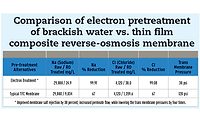Last year was a record year for automated guided vehicles (AGVs), with AGV system sales reaching $140 million, according to the Material Handling Institute (MHI). This marks a 39 percent increase compared with 2012, the Charlotte, N.C.-based association reports. In addition, approximately 1,047 vehicles were purchased during the term, it says.
“[2013] was a record year for the [automatic guided vehicle systems] (AGVS) industry,” said Sarah Carlson, spokesperson of the MHI’s AGVS industry group, in a statement. “In 2013, we saw a shift to more new systems in manufacturing and fewer vehicles per system. The economy is improving, and more companies are looking to add automation to increase productivity and lower operating costs.”
These cost-reduction capabilities are one of the biggest drivers for AGV integration, says Brad Moore, vice president of AGVPick and global accounts for Swisslog, Buchs, Switzerland. “AGVs are cost-reduction opportunities for beverage facilities,” he says. “The majority of cost reduction comes from automated transport for repetitive tasks, [thereby] reducing labor.”
Because AGVs transport full pallets of product throughout the warehouse or directly into trailers, they can help operations run more efficiently, explains Mark Longacre, marketing manager for JBT Corp.’s automated systems division in Chalfont, Pa. However, a productive AGV in the beverage industry typically needs to carry two fully loaded pallets to ensure productivity and throughput, notes Bryan Knott, global product manager for AGVs at Dematic Corp., Grand Rapids, Mich.
In fact, AGVs are workhorses that have much more financial success in terms of labor savings when operating in facilities that run three or more shifts, JBT’s Longacre says. “The AGVs are designed to operate on that duty cycle, and the more they operate, the quicker the customer will recoup the investment,” he says.
Although most AGV customers only consider labor savings, AGVs also offer other cost savings in terms of plant safety, accuracy and flexibility, Longacre notes. “Plant safety is improved because of the predictable manner in which AGVs operate and [their] controlled acceleration and deceleration rates,” he explains. “The AGV system also tracks all product movement, so no items are lost or misplaced and the right material is delivered to the right area on time. AGVs are very flexible and scalable, and additional vehicles can be added and systems changed to keep pace with changing demands.”
On top of these savings models, customers also look at the return on investment (ROI) for AGVs to determine whether an AGV system fits their business models. According Dematic’s Knott, most companies see an ROI within 36 months or less. With Dematic, projects typically deliver an ROI between 24 and 32 months, he says.
Depending on ROI requirements, most AGV customers own an average of four or five vehicles, Knott says. Companies that run a fleet with three or fewer AGVs tend to have environments where there is potential for facility and product damage or other safety concerns, and, as the AGVs help prevent these issues, the ROI is greater, he says. However, AGV systems also are flexible and scalable, as they can be added as the business grows or repurposed for other functions throughout the facility, which makes them an attractive material-handling solution, he adds.
In addition, for companies that are not ready to make the financial commitment of purchasing an AGV outright, rental options are available to help balance the budget, Knott notes. “Traditionally, AGV systems have been a capital purchase, which makes their adoption very difficult,” he explains. “Recently we are seeing a trend in fleet leases — much like the traditional fork truck business model. This moves the costs off the balance sheet and into [the profit and loss statement]. The costs are still the same, and the ROIs still have to be met, but it helps streamline acquisition and implementation without multi-year capital budget planning and approval.”
Safety is key
In addition to financial considerations, businesses often have to get used to the idea of autonomous vehicles wandering their warehouses and express safety concerns prior to AGV integration. However, AGVs are designed to be as safe and user-friendly as possible in order to help boost productivity in a warehouse or distribution facility.
“Customers often think that automation — AGVs included — will decrease the level of safety in the facility,” JBT’s Longacre says. “In fact, the opposite is true. AGVs operate in a very controlled and predictable manner. Plant personnel, whether pedestrians or driving manual vehicles, get very comfortable working around AGVs because they know the AGV will always be right on the path [and] operating at a known speed.”
The industry’s typical speed for unobstructed travel is approximately 4.9-5.9 feet a second, Dematic’s Knott notes. However, AGVs also are equipped with safety-rated scanners that identify obstructions in their paths. “There are safety fields that radiate out from the vehicle in all directions that constantly scan the surroundings and will instruct the vehicle to slow to a ‘crawl’ speed if something is detected in its outer safety field,” he explains. “The vehicle will come to a complete stop if the secondary field is entered. The vehicle will [then] continue to scan, and if the fields clear within a predetermined period of time — after multiple repeated scans for verification — the vehicle will resume operation.”
These safety sensors also can help keep AGVs on track and operating safely in areas where there might be less ground friction due to spills or other incidents, Swisslog’s Moore says. “One concern is always [that] spills on the floor are opportunities for less friction when moving and stopping,” he explains. “To address this concern, our vehicles have a significant slowdown field distance ahead of the vehicle to ensure that the vehicle will slow down to a low speed before being driven to a hard emergency stop. When accelerating, if a wheel should slip on a spill, our vehicle will stop because the anticipated movements do not match the actual movements.”
Smarter than your average vehicle
Although AGVs are careful of avoiding collisions with people and other objects in facilities, the vehicles are otherwise able to operate mostly independent of human control. Instead, most AGVs are guided by one of two main guidance systems: wired or laser-guided, says John Barry, vice president of sales and marketing at ITW Warehouse Automation, Arden, N.C. Lasers, which is the newer of the two technologies, tend to be more popular, because they offer flexibility for changing paths as needed, he notes.
However, JBT has noticed a trend of one AGV using multiple forms of navigation, including laser triangulation, inertial, embedded wire, magnetic tape, optical, image recognition/camera, and natural feature recognition, Longacre says. “In these instances, one form of navigation is used in certain areas of the facility, and then a second form of navigation is used in other areas of the facility,” he explains. “This allows customers optimum system performance in all areas, and switching between the different navigation systems is automatic and seamless, so you don’t see any change in the vehicle operation,” he says.
Dematic also is working on next-generation guidance technologies that can adapt to a changing warehouse environment and allow the vehicle itself to determine the best path and find detours if obstructions come into its path. These technologies incorporate some existing technologies as well as some newer technologies that have yet to be fully commercialized, Dematic’s Knott notes. Various methods of indoor GPS or positioning, 2-D and 3-D vision cameras, light detection and ranging (LiDAR), and sonar navigation can be used to help guide the AGV around a facility, he says. “The goal is to find the right combination of these technologies that further enhance the vehicle’s movement, precision and even real-time decision algorithms to keep the vehicle moving toward its mission objective without having to simply stop if an obstacle is encountered,” he says.










